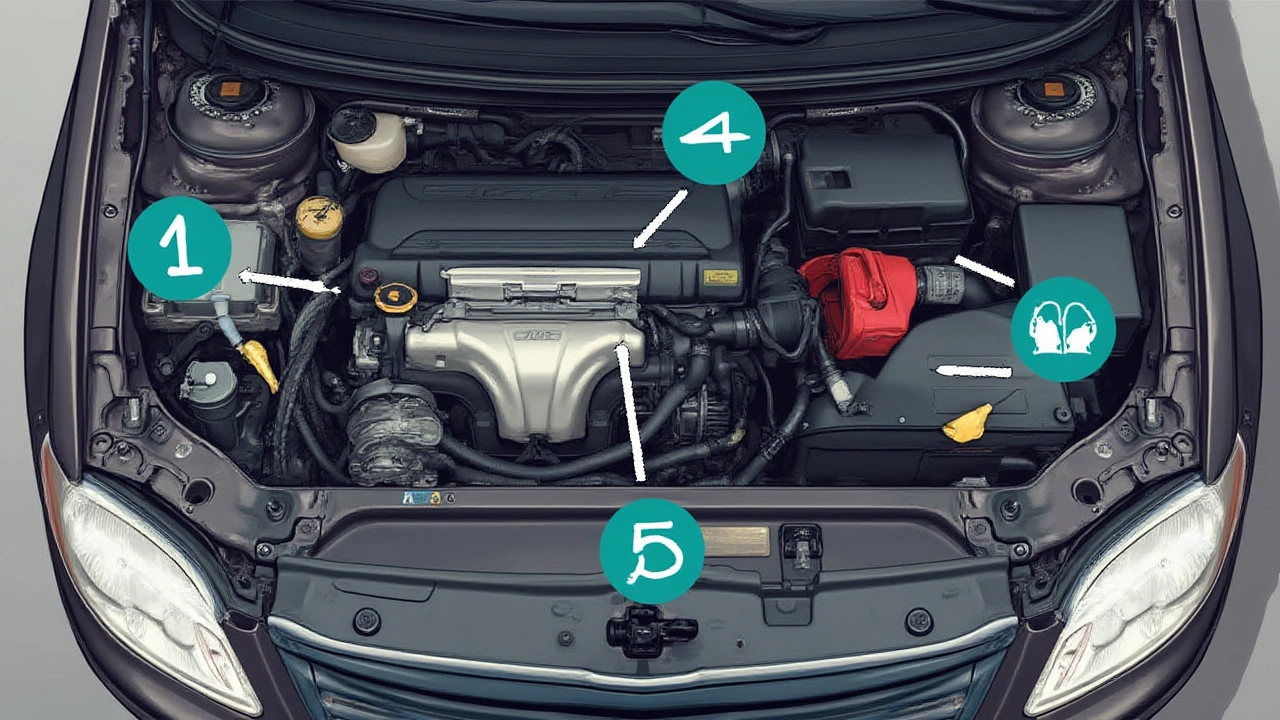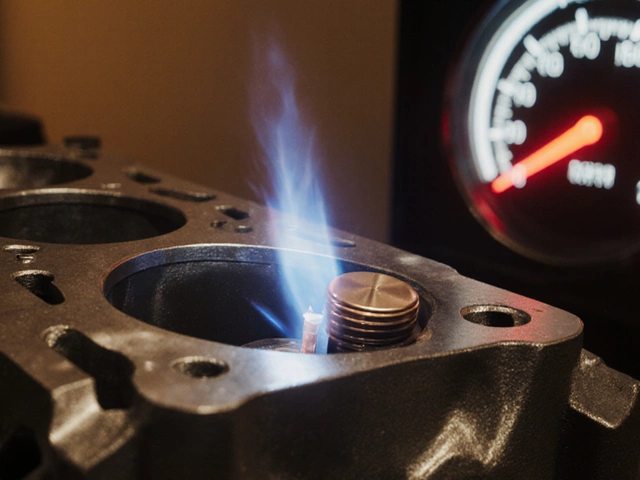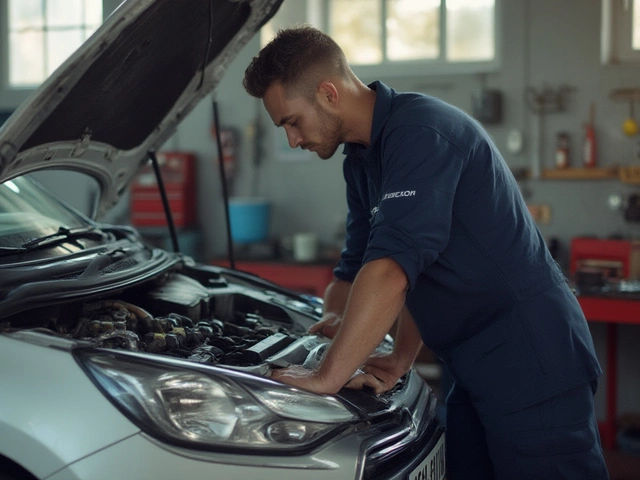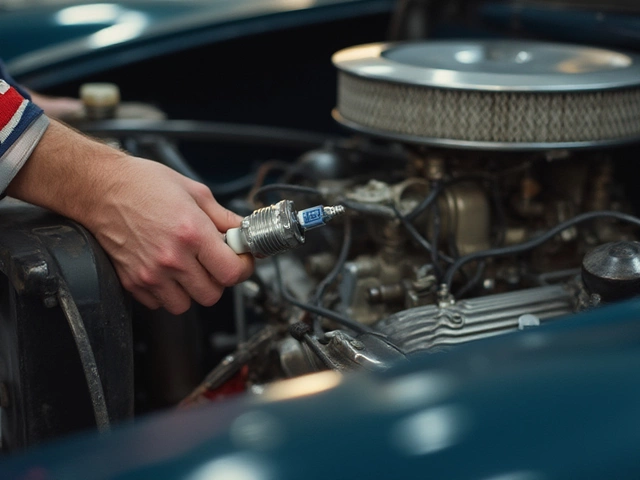Picture this: It’s rainy, your kid’s late for football, and your car’s dead in the driveway. You pop the bonnet, stare at that chunk of plastic and metal—and wonder, can you really swap your car battery without making things worse? Turns out, loads of us hesitate. Let’s break the doubts. There’s nothing mystical about car batteries. Mechanics aren’t using secret rituals or tools from a hidden stash. In fact, the average UK driver spends at least £80 on battery installation at a garage—a sting, considering batteries themselves often cost half as much. Truth is, most of us can do this job ourselves if we know a few critical details (and avoid a couple of rookie mistakes that could leave us stranded).
Is Replacing a Car Battery Safe and Feasible?
This is everyone’s first worry, whether you fiddle with bikes in the shed or keep your hands strictly on the steering wheel. Is car battery replacement actually safe? Quick answer: yes, as long as you follow common sense safety rules. The process isn’t loaded with gotchas, but it does deserve respect. Car batteries weigh 15 to 25kg, and they store a fair punch—about 12 volts, but most can spill out 600+ amps in a heartbeat. That will fry a spanner and startle anyone.
Don’t let that scare you off. Cars are designed so even ham-fisted types like me can switch a battery, as long as you disconnect things in the right order, use basic protection like gloves and glasses, and keep metal objects away from the terminals. Most important: switch off the car fully, keys out, door shut so lights aren’t draining power during the process. Yes, modern cars with tons of electronics (think Mercedes, BMW, or electric cars) sometimes need extra steps, like registering the battery or keeping radio codes handy, but for typical petrol or diesel runabouts (the sort you see zipping about in Bristol), it’s straightforward. If your car is older than 2010 and doesn’t look like something out of Star Trek, you’re in luck for a home swap.
You’ll want to check the owner’s manual for any oddball steps unique to your make or model. Japanese cars, for example, sometimes tuck the battery under covers or require you to unscrew a brace. But these curveballs rarely need special tools, just a socket set or sometimes a sturdy adjustable spanner. For peace of mind, keep the radio code, satnav settings, or electric seat presets written down before starting, just in case they vanish when you disconnect the battery. That’s the worst thing you’re likely to lose: your favorite pop station memory, not your car’s ability to start or drive.
Here’s a quick look at the typical specs you might see on common car batteries in the UK, to give you a sense of what you’ll be unplugging and swapping:
| Battery Type | Average Weight (kg) | Cold Crank Amps (CCA) | Voltage | Price Range (£) |
|---|---|---|---|---|
| Standard Lead-Acid | 17 | 360–600 | 12.6 | 45–110 |
| AGM (Start/Stop) | 20 | 650–950 | 12.7 | 90–190 |
| EFB (Enhanced) | 18 | 570–850 | 12.7 | 80–160 |
So, can you replace your car battery yourself? If you can use a spanner and remember to turn things off before handling it, you absolutely can. Just tackle it methodically and mind those safety details.
Tools, Preparations, and Things You'll Need
Don’t just yank the bonnet and hope for the best. You’ll want a tiny bit of prep and some tools you likely already own. Most basic DIY kits have what you need, and if you’ve ever built a flat-pack wardrobe, you’ll find this job even simpler. Here’s what you should have to hand:
- Wrench or socket set (usually 10mm or 13mm sockets fit battery terminals in most cars in the UK)
- Gloves (acid isn’t friendly, and batteries pick up a lot of grime and lead dust)
- Safety glasses (a battery popping in your face would make for a terrible afternoon)
- Anti-corrosion spray (cheap, but keeps white crust from coming back on terminals)
- Battery terminal cleaner brush (a wire brush or even a kitchen scourer if you’re stuck)
- Replacement battery (check the size, CCA, terminal layout—Halfords or Euro Car Parts can match by reg plate)
- Radio/satnav codes (if needed)
- Old rag for wiping dirt or acid marks
Don’t skip the gloves and glasses. Even modern sealed batteries have tiny vent holes. Once, after a few rainy days, I watched one spit out a fine mist when I nudged it, leaving burn marks on old jeans. Not fun. If the battery’s been leaking, don’t risk it. Also, avoid smoking or flames anywhere near an open battery; hydrogen gas is nothing to joke with.
Now a tip that saves headaches: snap a photo of the installed battery with your phone before pulling any cables. Modern cars might look simple, but the wiring behind the scenes has gotten complicated. A photo helps route things back the right way, especially if there are extra earthing cables tucked on the clamps.
Lastly, while almost all home batteries are drop-ins, if your car has a stop-start system, it probably uses an AGM or EFB battery. Swapping to the right type is crucial—don’t stick a basic lead-acid in if the original was AGM, or the electronics could throw a fit (and fail to activate stop-start, costing you extra petrol over time).

Step-by-Step Car Battery Replacement at Home
Once you’re set on doing it yourself, here’s where it gets oddly satisfying. Here’s the full rundown—not just the typical quick version, but everything you need to avoid the classic pitfalls. Follow the order, and you’ll be done before your kid’s latest cartoon episode wraps up:
- Park your car on a flat, safe spot. Handbrake on, engine off, key out, and keep everything switched off (including interior lights).
- Open the bonnet—most cars will have a yellow or red tab handle. Secure it with the prop if your car has one, so the bonnet doesn’t drop on your fingers.
- Find the battery (sounds obvious, but some are buried under covers or in the boot—your manual will help).
- Take a clear photo of the current setup.
- Unclip any battery cover or bracket—these usually pop off with one or two screws or small bolts.
- Starting with the negative terminal (usually marked with a minus sign or black colour), loosen the clamp and wiggle it off. Tucking it to the side so it doesn’t spring back onto the terminal—an old sock over the cable end does the trick.
- Do the same for the positive terminal (red, plus sign). It’s crucial to remove negative first so you don’t accidentally ground your spanner and cause a short.
- Undo the battery hold-down bracket—there’s often a bolt at the base or a strap across the top.
- Lift the battery out gently; it’s heavy, but manageable with two hands.
- Double-check the battery tray for corrosion or dirt. Scrape off any flaky stuff, spray on anti-corrosion spray, and wipe it dry.
- Set the new battery in, matching up the terminals left/right the same way as the old one. Make sure it sits flat.
- Bolt down the hold-down bracket again—don’t overtighten, just firm and secure.
- Rub a dab of Vaseline or anti-corrosion spray onto the terminals to prevent future build-up (pro tip from seasoned cab drivers in Bristol).
- Connect the positive (red) terminal first, tighten the clamp securely.
- Now connect the negative (black) terminal, tighten that clamp.
- Clip any plastic covers or plugs back on.
- Give the battery and engine bay a quick look to ensure no tools, rags, or odd bits got left inside.
- Test it! Start the car. Lights, radio, satnav—see if everything powers up. If you’ve lost your radio code, now’s your chance to re-enter it.
- Reset your clock and re-save your radio stations if needed.
- Chuck the old battery into the boot. Recycle it ASAP; most shops, including Halfords, will take it off your hands for free and keep the acid and lead out of landfills. Don’t tip it in the wheelie bin.
If the car coughs but doesn’t start, double-check the terminals. They need to be clean and tight. Don’t be tempted to whack them with anything metal; just twist and nudge them on properly. If it still won’t go, make sure the new battery matches your car’s required capacity. Some cars really are picky—wrong CCA, and things might not crank at all.
Don’t worry if you set off the alarm when you reconnect power. It happens to everyone—hold the key fob’s unlock button for a few seconds, and it usually sorts out within moments.
Pro Tips and Common Pitfalls When Replacing Your Car Battery
After you’ve swapped a few batteries, you start to notice the smaller things that turn an easy job into a painful one. Here’s a shortlist of lessons I’ve learned the messy way—so you don’t have to.
- Always double-check battery sizes before buying—reg plate lookups are your best friend, but measure the old one to be sure. A mismatch means your battery won’t fit, even if the posts line up.
- Save any memory settings for expensive tech in your car—radio, satnav, seat, mirrors. Older Mercedes and BMWs can lose their auto window functions if left without power for too long. A £10 memory saver gadget you plug into the OBD port can help on fancier cars, but it’s rarely crucial.
- Don’t rush. Hurrying means dropped nuts, pinched fingers, or missed steps. I once installed a battery backward in a downpour—never again.
- Watch for any warning lights staying on after you reconnect. For most cars, everything should reset to normal, but sometimes you’ll spot airbag, check engine, or traction control lights. Usually, a short drive sorts this out. If not, check for loose connections, or read the manual.
- If the battery terminals are covered in white crust, don’t ignore it. Clean them properly, or the new battery might end up with poor contact and refuse to charge well.
- Keep kids and pets safely aside during the job. My son Gideon tried to ‘help’ and nearly ran off with my 10mm socket halfway through the job. Learn from my panic.
- If your car still refuses to start even with a brand-new battery, don’t despair. Check for blown fuses or a faulty starter motor. Sometimes a dying alternator masquerades as a dead battery, especially if your old one always seemed to drain quickly.
Batteries are pretty forgiving as long as you play by their rules. The savings compared to hiring a mechanic are substantial—you pocket the difference for less than 30 minutes’ work. Plus, there’s something weirdly satisfying about fixing this vital bit yourself. Your car will thank you with another few years of reliable morning starts, and—if you’ve got kids—enough coin left for ice creams next time the sun’s out in Bristol.






